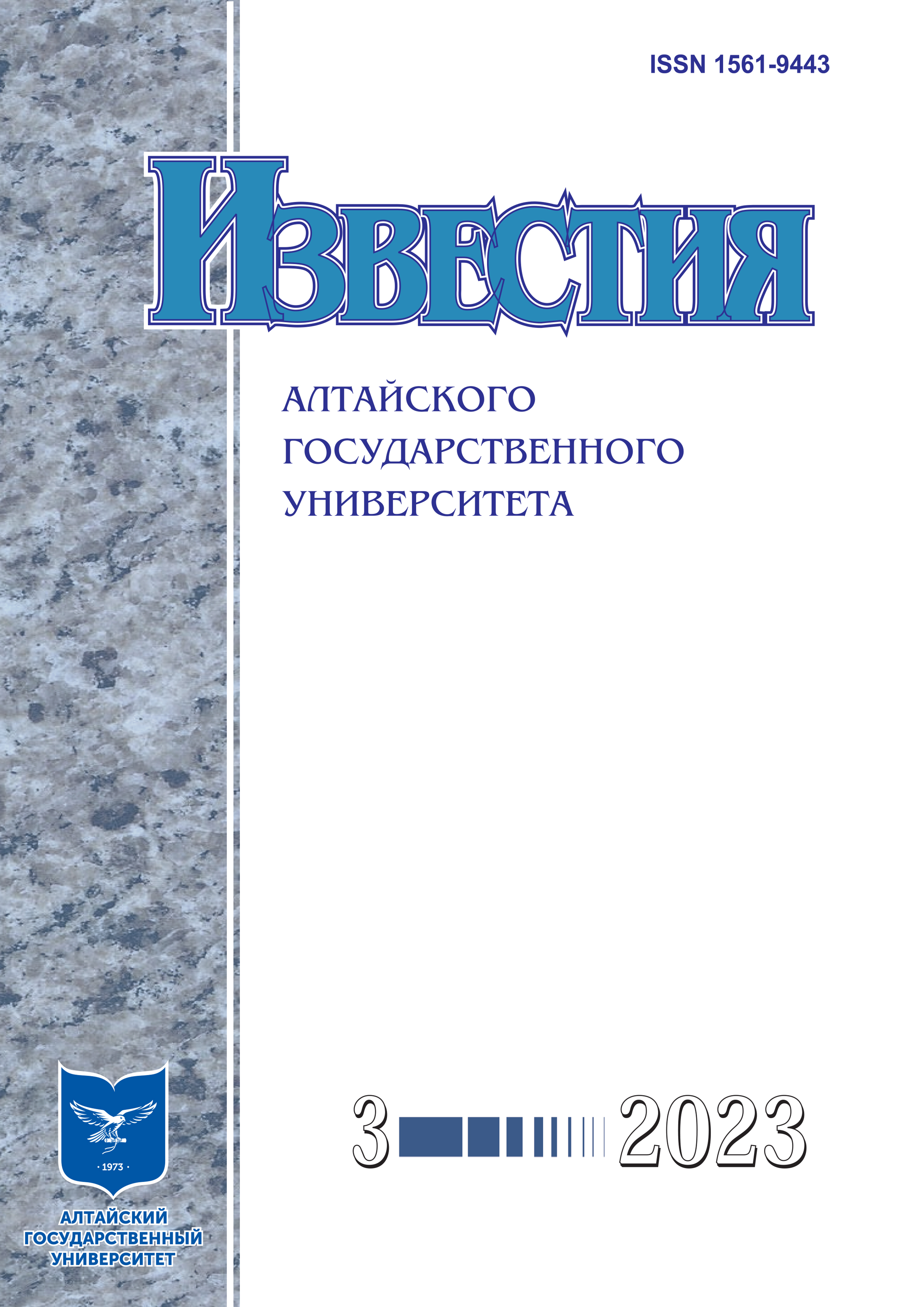Formation and Development of the Barnaul Spiritual Government (BSG) Parish System in the Second Half of 18th — Early 19th Centuries
УДК 94(47):314 ББК 63.3(253)5+60.73(2)5
Abstract
This article examines the issues of the parish’s system formation of the Barnaul Spiritual Government (BSG) in the second half of the 18th — early 19th centuries. The work is aimed at restoring the list of settlements (constituent parts of the BSG parishes), as well as at constructing parish boundaries using a GIS model and also analyzing the dynamics of the number and composition of settlements (constituent parts of parishes). It is concluded that there were several types of parishes in the BSG (formed in 1750): at factories (7), at mines (1), rural (13), at military fortifications (3), urban (6). Parishes at military fortifications appear among the very first, some of them were formed before the formation of the BSG. Factory parishes and communities at the mines were formed by the end of the 1760s. The chronology of the rural parish’s formation is the widest — starting from the first half of the 18 century and up to the 1780s. The process of the parish’s emergence was largely due to the policy of developing the metallurgical industry in the region, as well as active colonization.
According to the data for 1755, there were 242 settlements in the BSG, for 1780 — 385, for 1800 — 619, for 1820 — 780, for 1829 — 545. The number of parishes was also not stable — the network was finally formed by 1787 in the number of 23 communities. Only in 1829 their composition was reduced to 16. At the initial stage of the BSG work, there were also parishes within the boundaries of only one locality. The record holders for the maximum number of objects were communities with centers in the villages of Chingis (99) and Beloyarsk (98).
Downloads
Metrics
References
Наумова О.Е. Иркутская епархия. XVIII — первая половина XIX в. Иркутск, 1996.
Дулов А.В., Санников А.П. Православная церковь в Восточной Сибири в XVII — начале XX века : в 2 ч. Иркутск, 2006.
Дворецкая А. П., Терскова А. А., Хаит Н. Л. Православная церковь и население Приенисейской Сибири. 1700-1919 гг. Красноярск, 2018.
Цысь В.В., Солодкин Я.Г., Цысь О.П., Спичак А.В. Русская православная церковь на севере Западной Сибири в конце XVI — начале XX в.: институциональное влияние на политические, социальные, экономические и этнокультурные процессы (формы, факторы, специфика, историческая роль). Нижневартовск ; Новосибирск, 2020.
Беглов А.Л. Православный приход Российской империи на рубеже XIX-XX вв.: состояние, дискуссии, реформы : автореф. дис. ... д-ра ист. наук. М., 2020.
Зольникова Н.Д. Сибирская приходская община в XVIII веке. Новосибирск, 1990.
Адаменко А.М. Приходы Русской православной церкви на юге Западной Сибири в XVII — начале XX века. Кемерово, 2004.
Владимиров В.Н., Силина И.Г., Чибисов М.Е. Приходы Барнаульского духовного правления в 1829-1864 гг. (по материалам клировых ведомостей). Барнаул, 2006.
Религиозный ландшафт Западной Сибири и сопредельных регионов Центральной Азии. Т. 1: Поздняя древность — начало ХХ в. / отв. ред. П.К. Дашковский. Барнаул, 2014.
Санников А.П. Православный приход Прибайкалья и его количественные характеристики в конце XVII-XVIII в. // Известия Иркутского государственного университета. Серия: Политология. Религиоведение. 2015. Т. 11.
Владимиров В. Н., Сарафанов Д. Е., Крупочкин Е. П. Численность населения в пространстве приходов Колы-вано-Воскресенского горного округа во второй половине XVIII в.: возможности ГИС для анализа массивов данных // Исторические исследования в контексте науки о данных: информационные ресурсы, аналитические методы и цифровые технологии : материалы Международной конференции. Москва, 4-6 декабря 2020 г. М., 2020.
Сарафанов Д.Е., Ильин В.Н. Территория заводских приходов Барнаульского духовного правления во второй половине XVIII — начале XIX в. // Известия Алтайского государственного университета. 2022. № 3 (125).
Сарафанов Д.Е., Иванова В.В. Сельские приходы Барнаульского духовного правления во второй половине XVIII — начале XIX в.: территориальные аспекты формирования системы приходов // Известия Алтайского государственного университета. 2023. № 2 (130).
Государственный архив Томской области (ГАТО). Ф. 263. Оп.1. Д. 1.
ГАТО. Ф. 263. Оп.1. Д. 7.
ГАТО. Ф. 263. Оп.1. Д. 21.
ГАТО. Ф. 263. Оп.1. Д. 59.
ГАТО. Ф. 263. Оп.1. Д. 89.
Государственный архив Алтайского края. Ф. 26. Оп. 1. Д. 306.
Copyright (c) 2023 Дмитрий Евгеньевич Сарафанов

This work is licensed under a Creative Commons Attribution 4.0 International License.
Izvestiya of Altai State University is a golden publisher, as we allow self-archiving, but most importantly we are fully transparent about your rights.
Authors may present and discuss their findings ahead of publication: at biological or scientific conferences, on preprint servers, in public databases, and in blogs, wikis, tweets, and other informal communication channels.
Izvestiya of Altai State University allows authors to deposit manuscripts (currently under review or those for intended submission to Izvestiya of Altai State University) in non-commercial, pre-print servers such as ArXiv.
Authors who publish with this journal agree to the following terms:
- Authors retain copyright and grant the journal right of first publication with the work simultaneously licensed under a Creative Commons Attribution License (CC BY 4.0) that allows others to share the work with an acknowledgement of the work's authorship and initial publication in this journal.
- Authors are able to enter into separate, additional contractual arrangements for the non-exclusive distribution of the journal's published version of the work (e.g., post it to an institutional repository or publish it in a book), with an acknowledgement of its initial publication in this journal.
- Authors are permitted and encouraged to post their work online (e.g., in institutional repositories or on their website) prior to and during the submission process, as it can lead to productive exchanges, as well as earlier and greater citation of published work (See The Effect of Open Access).








